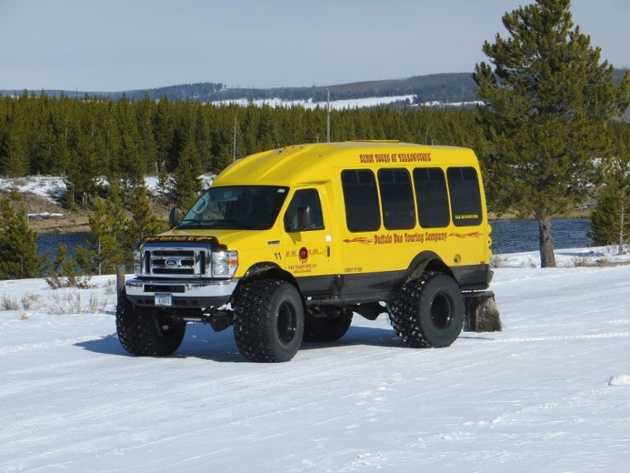COOKIES ON THE YOKOHAMA ATG SITE
We use cookies on this site to enhance your user experience. By clicking any link on this page, you are giving your consent for Yokohama ATG to set cookies.
May 30, 2017 << Back to Blog

May 30, 2017
The moose, bears, and other wildlife in Yellowstone National Park will see interesting new tracks in the snow this winter tourist season: the imprints of high-flotation tires. For the past 60 years, all winter vehicles in this famous U.S. landmark have run on rubber tracks. But this winter, Randy Roberson, owner of Buffalo Bus Touring Company of West Yellowstone, Montana, will be putting Alliance low-pressure flotation tires to the test traversing the snows of the park.
“The National Park Service has strict rules for maintaining the impact of vehicles on the park’s environment and on the visitor experience, limiting the physical effects of driving as well as noise levels,” says Anthony Cresta, Field Sales Engineer for Alliance Tire Americas, Inc. “Low-pressure flotation tires are made to ride gently on top of fragile surfaces like snow pack and leave the terrain below as intact as possible. That makes them an excellent alternative to continuous drive tracks, which can cause a racket and be much more expensive to install and maintain.”
This will be the third year of Roberson’s study pitting flotation tires against tracks. Roberson’s analysis of his 2013-2014 trials revealed that flotation tires:
Last year, Roberson tested 600/50R22.5 Alliance 382 DOT All-Steel flotation tires—rated for speeds of up to 62 mph on the highway—on one of his coaches. This year, he will again be running the 382s and adding Alliance 381 tires in 710/40R22.5 and 620/50R22.5 sizes to the list of tires in the trial.
Roberson says last year, a survey of more than 300 customers showed the tourists’ reactions to riding on the low-pressure tires was “consistently positive.”
In fact, says Roberson, “based on every mode of communication with our guests, from our guides and Yellowstone visitors we encountered from other companies, a transition to this type of over-snow vehicle would not only be accepted, it would be preferred.”
01-Dec-2023
30-Oct-2023
16-Oct-2023
10-Oct-2023
04-Oct-2023
01-Sep-2023